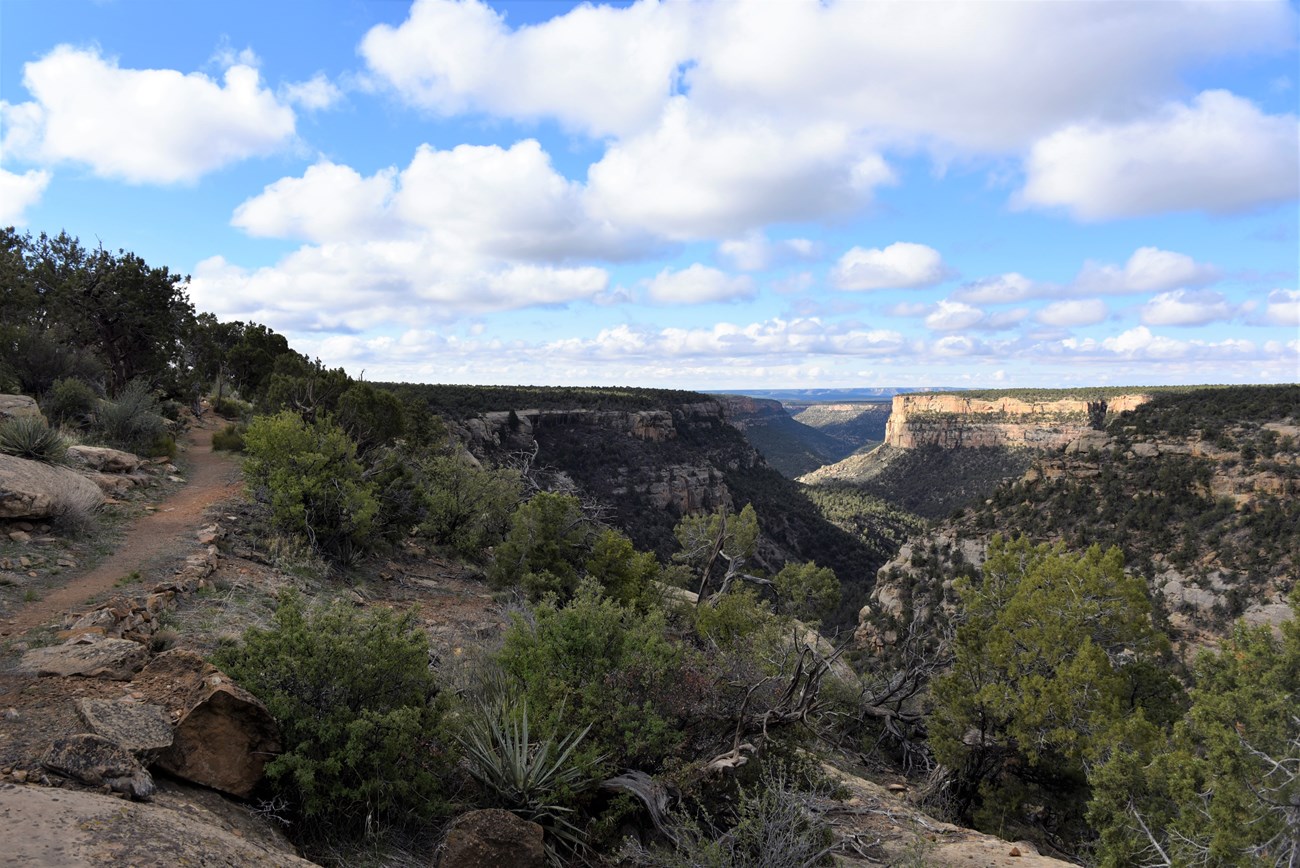|
The following information will provide your students with a basic overview of the natural and cultural history of Mesa Verde National Park. 1. Welcome To Mesa VerdeRanger TJ loves to share the history of her people with park visitors. Ranger TJ is Laguna Pueblo. Her ancestors lived on the mesa long ago. The requested video is no longer available.
2. The Mesa Verde EnvironmentMesa Verde National Park is located in Southwest Colorado, near Four Corners. Four Corners is where the states of Utah, Arizona, New Mexico, and Colorado all meet. Use a classroom map to locate Four Corners and Mesa Verde National Park. 
3. Living on the MesaFor over 700 years, Pueblo people lived on and around the Mesa Verde region. Pueblo Indians are American Indians who live in pueblos and have a long tradition of farming. Pueblo is the Spanish word for "village" or "town." In the Southwest, a pueblo is a settlement that has houses made of stone, mud, and wood. The houses have flat roofs and can be one or more stories tall. 



Why move into a cliff dwelling? Pueblos built into these natural rock alcoves were protected from wind, rain, and snow. Active seep springs where families could collect water were also located below the canyon rim, in or near many of these alcove sites. |
Last updated: April 21, 2025
